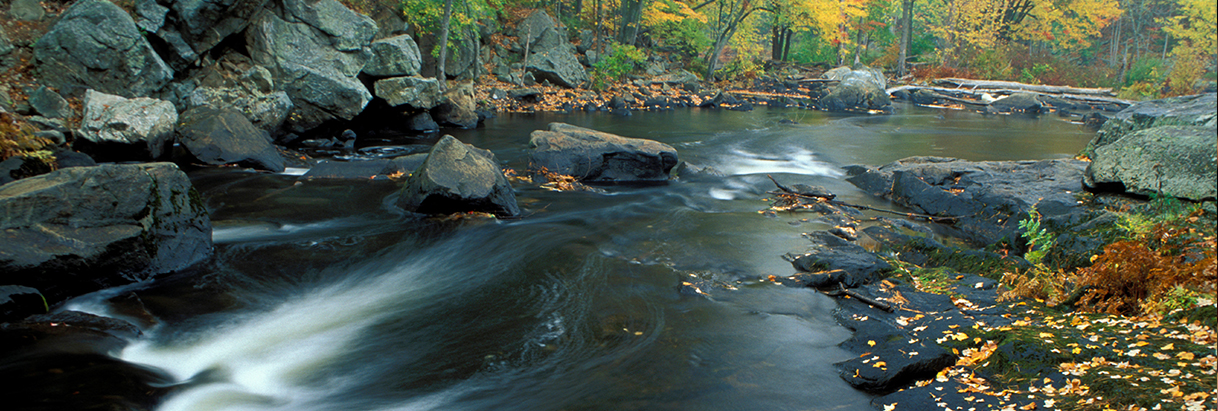Water Pollution Prevention
Water pollution comes from two major source types:
Point source pollution comes from a specific place, such as a discharge pipe from a factory. The Lamprey River has only two regulated point source discharges, the wastewater treatment facilities in Newmarket and Epping, that release treated wastewater directly into the Lamprey River. In many cases, point-sources are regulated by state or federal authorities.
Non-point source pollution comes from diffuse sources, such as failing septic systems, construction sites, dumps, agricultural fields, and runoff from roads and streets. Rain washes pollutants from these various sources into channels, storm drains, streams and other waterways. Eventually, the pollutants make their way into rivers and other large bodies of water.
Sources of Non-point Pollution
Erosion
Rain washes soil from yards, fields, stream banks, and roadsides into bodies of water. When soil is suspended in the water, it prevents sunlight from reaching aquatic plants, and plants are unable to perform photosynthesis. Photosynthesis produces oxygen that aquatic organisms need to live. Soil also clogs fish gills and adds sediment to spawning areas needed by freshwater mussels. Minimizing erosion can often be accomplished by making sure the bare soil is covered by vegatation.
Septic Systems
Failing or inadequately designed septic systems can lead to bacteria, viruses and nutrients leaving a septic system before they are properly treated. Water with a high bacteria count can be closed to recreation, such as fishing and swimming, and can lose its license as a source of drinking water. Excess nutrients can cause a cascade of negative effects in water ways. Septic systems need to be sized to the amount of waste they are expected to treat. All septic systems need to be pumped out every 2-3 years to function effectively; however, even a properly maintained septic system can only be expected to last for 30 years at most.
Roadside Runoff
Runoff from roads and parking lots carries oil, grease, road salts and automotive fluids into our storm drains, streams, lakes and rivers. Roads and roofs also collect a lot of particulate nitrogen that falls from the sky as a result of burning fossil fuels. Oil and grease are toxic to aquatic life. High salt content can impair the embryonic development of amphibians and fish. Nitrogen, although necessary in tiny amounts, is a major pollutant in water when present in high concentrations.
Heavy Metals
Rainfall also transports heavy metals into our waterways. These metals include lead, aluminum, copper, chromium, nickel, cadmium and zinc. By far, the largest amounts of metals come from automobiles, junkyards and scrap piles. Large quantities of heavy metals are toxic to aquatic life. In some cases, the metals accumulate in fish and shellfish making them dangerous for people to eat.
The NHDES and Office of State Planning have submitted to Congress a strategy for implementing Best Management Practices (BMPs) to control nonpoint source pollution in coastal waters, including the Lamprey. The strategies devised under the program (mandated in the Coastal Zone Act Reauthorization Amendments of 1990, Section 6217, "Protecting Coastal Waters") continue to be published.

